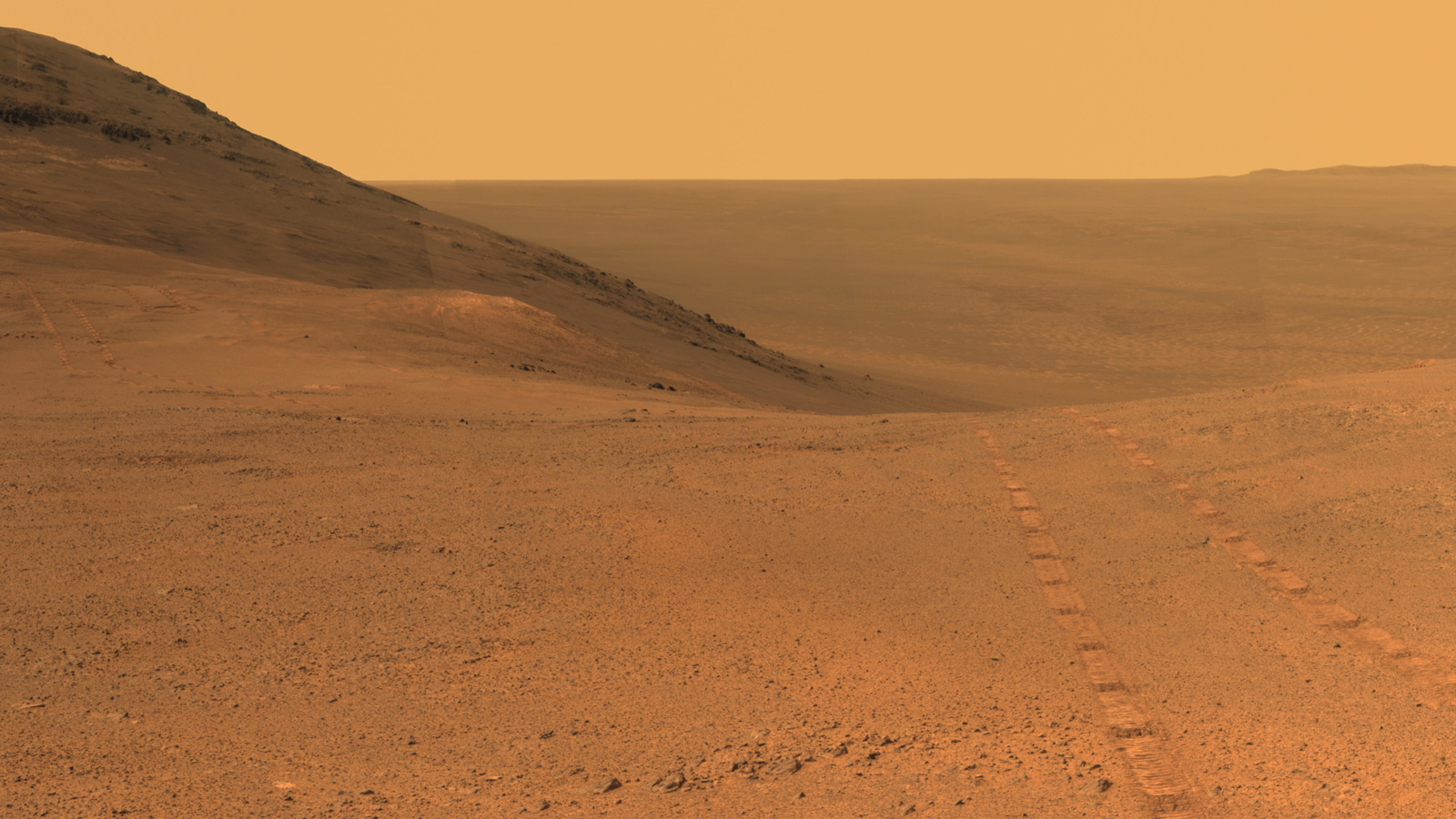NASA Starts 45-Day Clock to Contact Mars Rover Opportunity as Dust Storm Wanes
The planet-enveloping dust storm on Mars has settled enough for NASA to start a 45-day active-listening period in which the agency hopes to make contact with the rover Opportunity after three months of silence, NASA announced yesterday (Sept. 11).
So, for the next 45 days, NASA engineers will nudge the spacecraft several times a day, rather than the three times a week that had been the procedure. That schedule is based on the hope that the rover is now harvesting enough solar power to receive and respond to commands. In this "active-listening" procedure, NASA will send instructions that force the rover to create a signal at a specific frequency if it is powered up and not seriously damaged.
If the rover has not yet made contact when those 45 days have ended, NASA will have to determine how to proceed. In a statement released Aug. 30, the agency said it would continue to listen passively for the rover until the end of January. [Mars Dust Storm 2018: What It Means for Opportunity Rover]
The new stage of the recovery plan was triggered when NASA made two consecutive measurements of atmospheric opacity, called tau, of less than 1.5. When Opportunity first lost contact with Earth, that measurement was above 10. The agency hopes that now that the dust is settling out of the Martian skies, the rover's solar panels will be able to successfully charge so the can robot re-establish contact with Earth.

When the plan was announced, some scientists affiliated with the mission expressed concern that pegging this active-listening period to the atmospheric opacity would start the clock on Opportunity too soon.
That's because all that dust simply falls down, which means there's nothing to stop it from falling onto the rover's solar panels. And if the problem is dust blocking the solar panels from charging, it doesn't matter whether the dust is floating in the air or resting on the panels. Mars has seasonal weather patterns called dust devils that could clear that dust away, but those won't begin until November — by which point, the 45 days of active outreach will have ended.
The rover has been exploring the surface of Mars since 2004, far outlasting its original mission timeline of 90 Martian days (a Martian day is about 40 minutes longer than a terrestrial one). But the engineers and scientists who control the rover haven't heard a peep from Opportunity since June 10.
Get the Space.com Newsletter
Breaking space news, the latest updates on rocket launches, skywatching events and more!
They hope the robot is merely hibernating, waiting for the dust to settle. Either way, the next 45 days may be the best chance Opportunity has left.
Email Meghan Bartels at mbartels@space.com or follow her @meghanbartels. Follow us @Spacedotcom, Facebook and Google+. Original article on Space.com.
Join our Space Forums to keep talking space on the latest missions, night sky and more! And if you have a news tip, correction or comment, let us know at: community@space.com.

Meghan is a senior writer at Space.com and has more than five years' experience as a science journalist based in New York City. She joined Space.com in July 2018, with previous writing published in outlets including Newsweek and Audubon. Meghan earned an MA in science journalism from New York University and a BA in classics from Georgetown University, and in her free time she enjoys reading and visiting museums. Follow her on Twitter at @meghanbartels.









